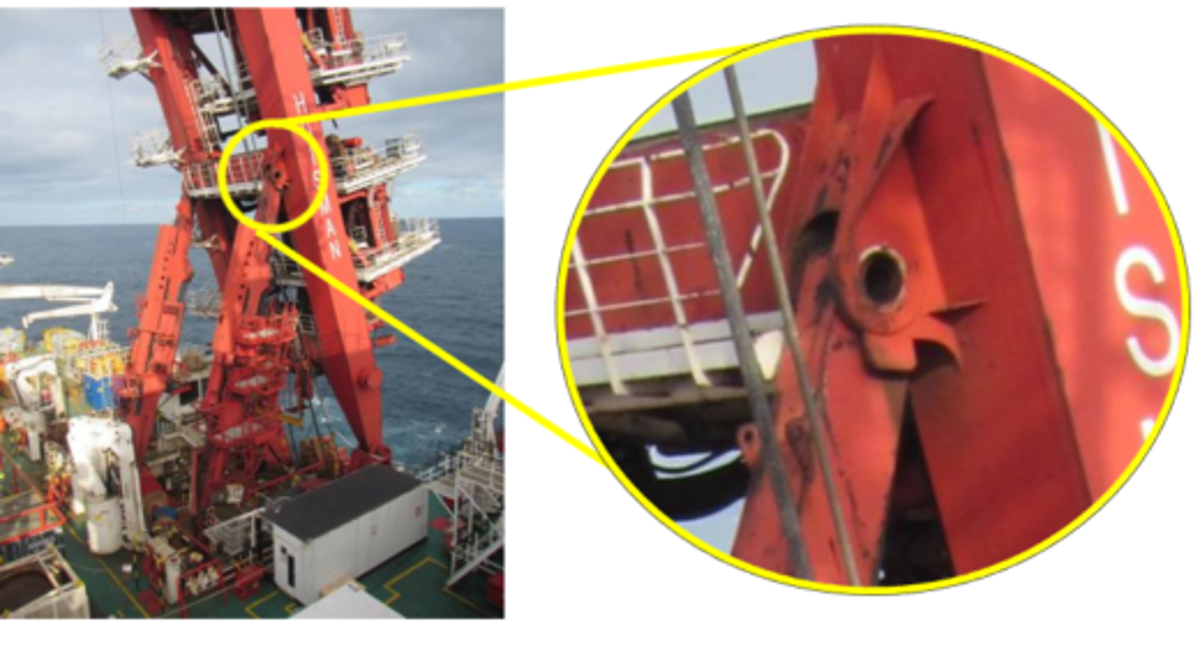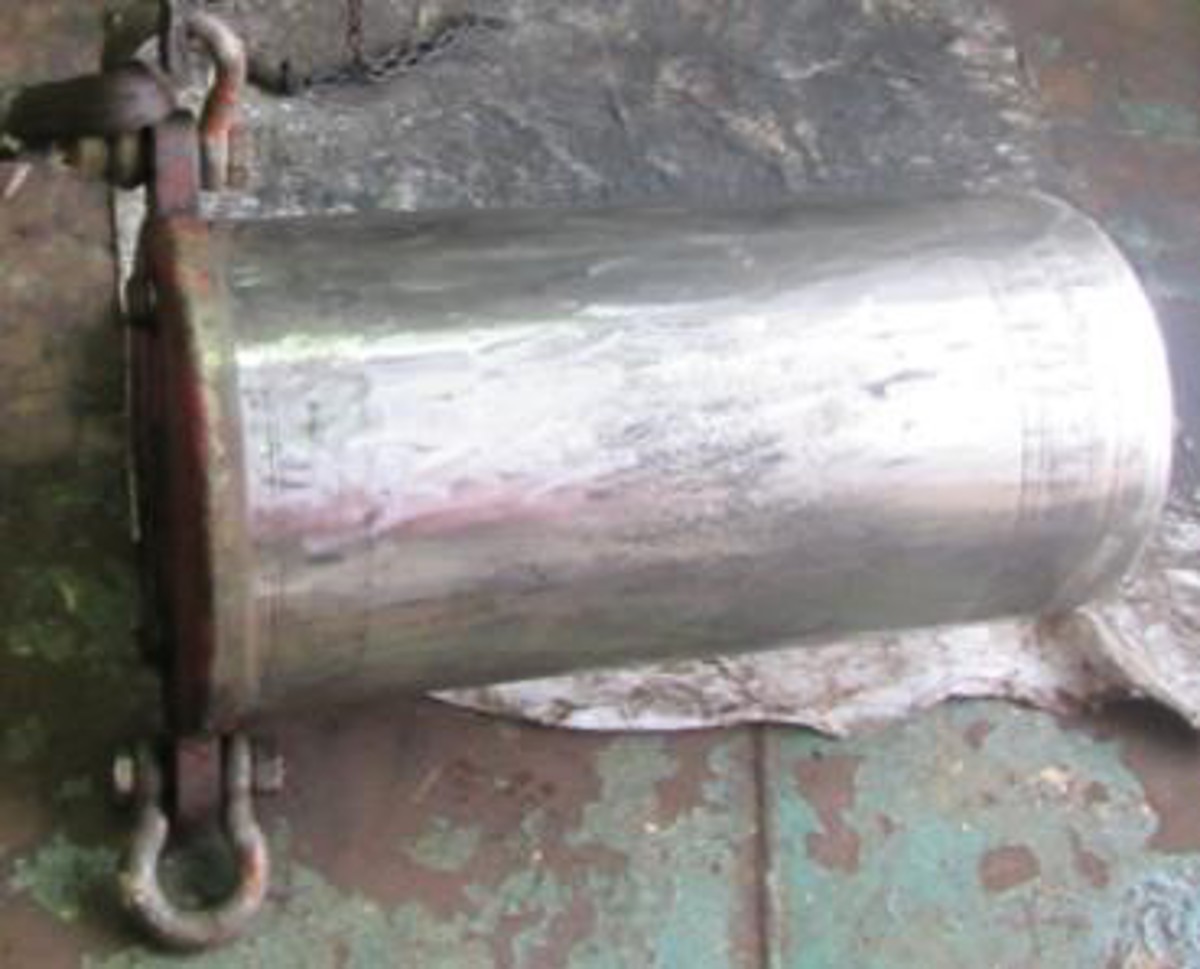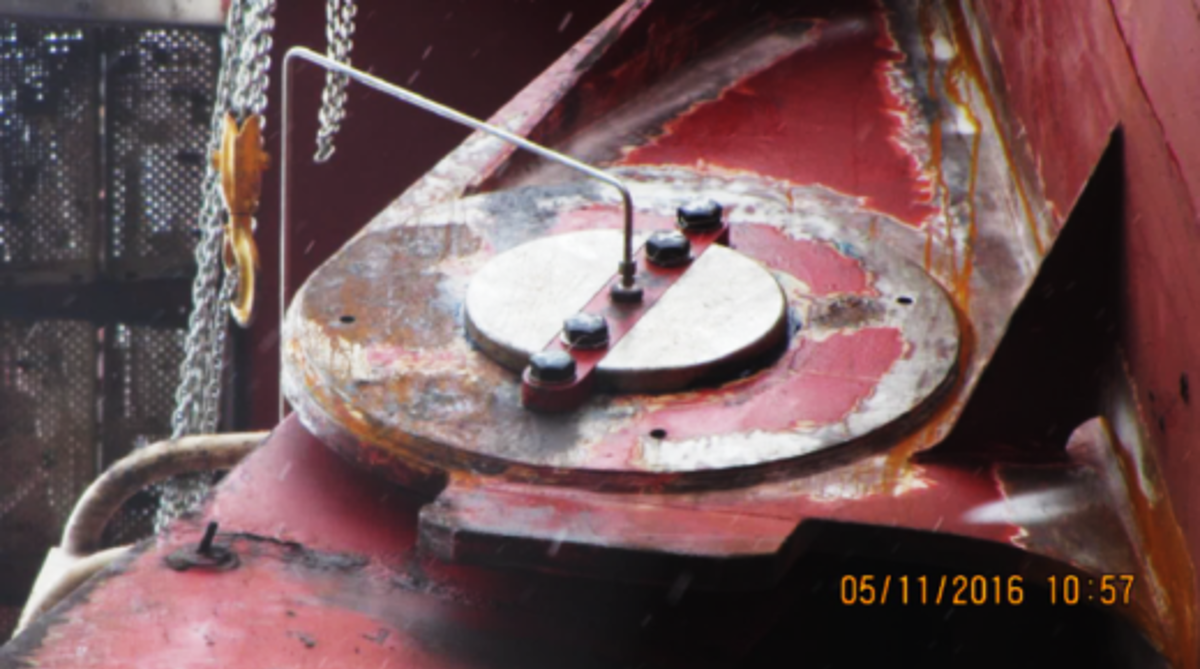Dropped object: Lay tower adjuster leg pin
- Safety Flash
- Published on 22 May 2017
- Generated on 8 December 2025
- IMCA SF 11/17
- 2 minute read
Jump to:
The securing pin from a tiltable lay system (TLS) adjuster leg, weighing 600 kg, fell 16 m to deck.
What happened?
The incident occurred when the keeper plate bolts slackened off. No-one was in the immediate area below the adjuster leg at the time of the event and no-one was injured.
At the time of the incident there was an umbilical in the tower, but the umbilical was not being deployed. If deployment operations had been ongoing, then there would have been the potential for further consequences if the top tension were to have been above the survival capacity of one adjuster leg.

right: close-up of the adjuster leg housing (with bolts, keeper plate and pin missing)

the pin

renewed locking key anti-rotation bolts and greasing line
What went wrong?
- Investigations found that the planned maintenance and inspection regime was inadequate and unclear.
- During transits the tower was at times kept in operational position which could have allowed excess movement of the pin due to reduced load and increased dynamic movement.
- The design made it difficult to lubricate the pin adequately which may have caused excess friction.
Actions
- Following discussions with the manufacturer, the vessel returned to port for investigation, and during the transit to port, Structural Non-Destructive Testing (NDT) of pin connecting parts was undertaken on both legs to verify sufficient load capacity and seaworthiness.
- Adjuster leg pin put back in place and increased diameter anti-rotation locking key bolts were installed to provide additional bolt shear strength, as per manufacturers recommendation.
- Additional temporary bolt locking mechanisms (Loctite and locking wires) were installed on both adjuster leg pins locking key bolts to ensure vibration would not loosen the bolts before the permanent solution was ready.
- A check was made throughout the tower, of the tightness of all critical bolts and pins; new pin, bushing and lubricating lines were installed.
Longer term actions
- Tower to be in survival mode position during all transits according to the manufacturer’s recommendations.
- Planned maintenance requirements updated and clearly defined for accurate inspection criteria for critical pins and securing mechanisms.
- Bolt locking mechanisms installed in TLS critical pins (adjusters and TLS pivot) to ensure vibration will not loosen critical bolts.
Related safety flashes
-
IMCA SF 06/15
8 May 2015
-
IMCA SF 01/15
16 January 2015
-
IMCA SF 04/10
14 July 2010
IMCA Safety Flashes summarise key safety matters and incidents, allowing lessons to be more easily learnt for the benefit of the entire offshore industry.
The effectiveness of the IMCA Safety Flash system depends on the industry sharing information and so avoiding repeat incidents. Incidents are classified according to IOGP's Life Saving Rules.
All information is anonymised or sanitised, as appropriate, and warnings for graphic content included where possible.
IMCA makes every effort to ensure both the accuracy and reliability of the information shared, but is not be liable for any guidance and/or recommendation and/or statement herein contained.
The information contained in this document does not fulfil or replace any individual's or Member's legal, regulatory or other duties or obligations in respect of their operations. Individuals and Members remain solely responsible for the safe, lawful and proper conduct of their operations.
Share your safety incidents with IMCA online. Sign-up to receive Safety Flashes straight to your email.